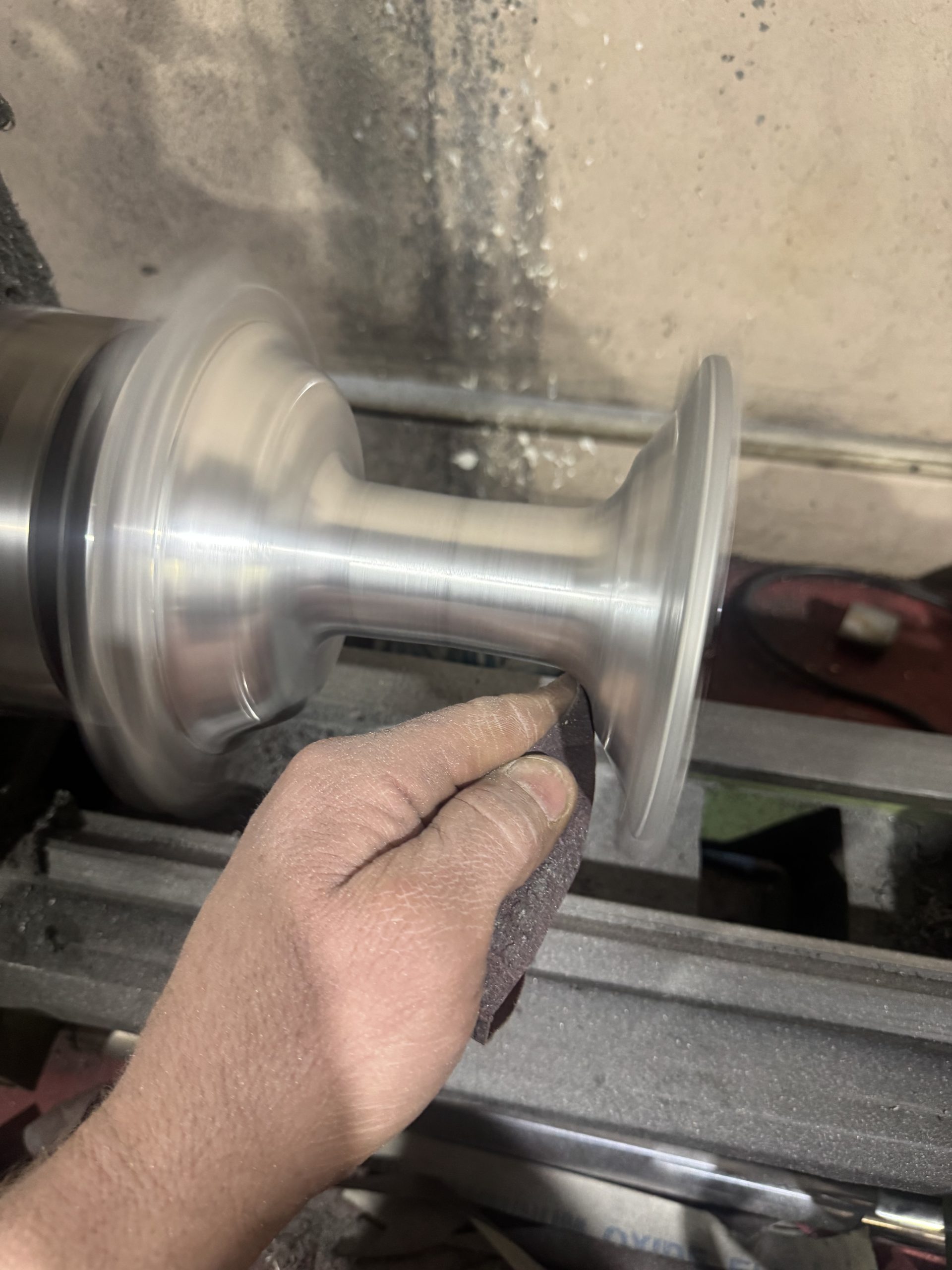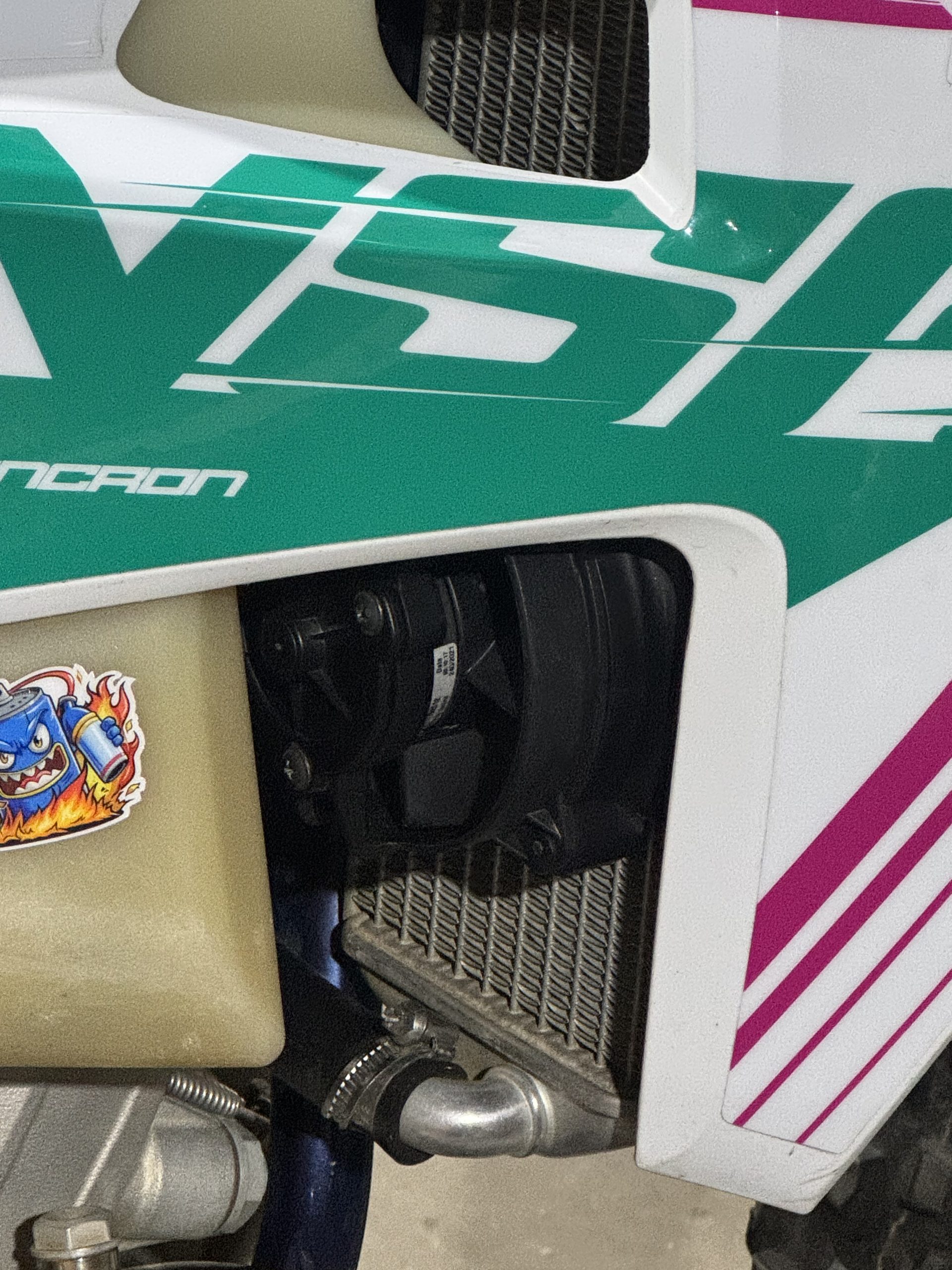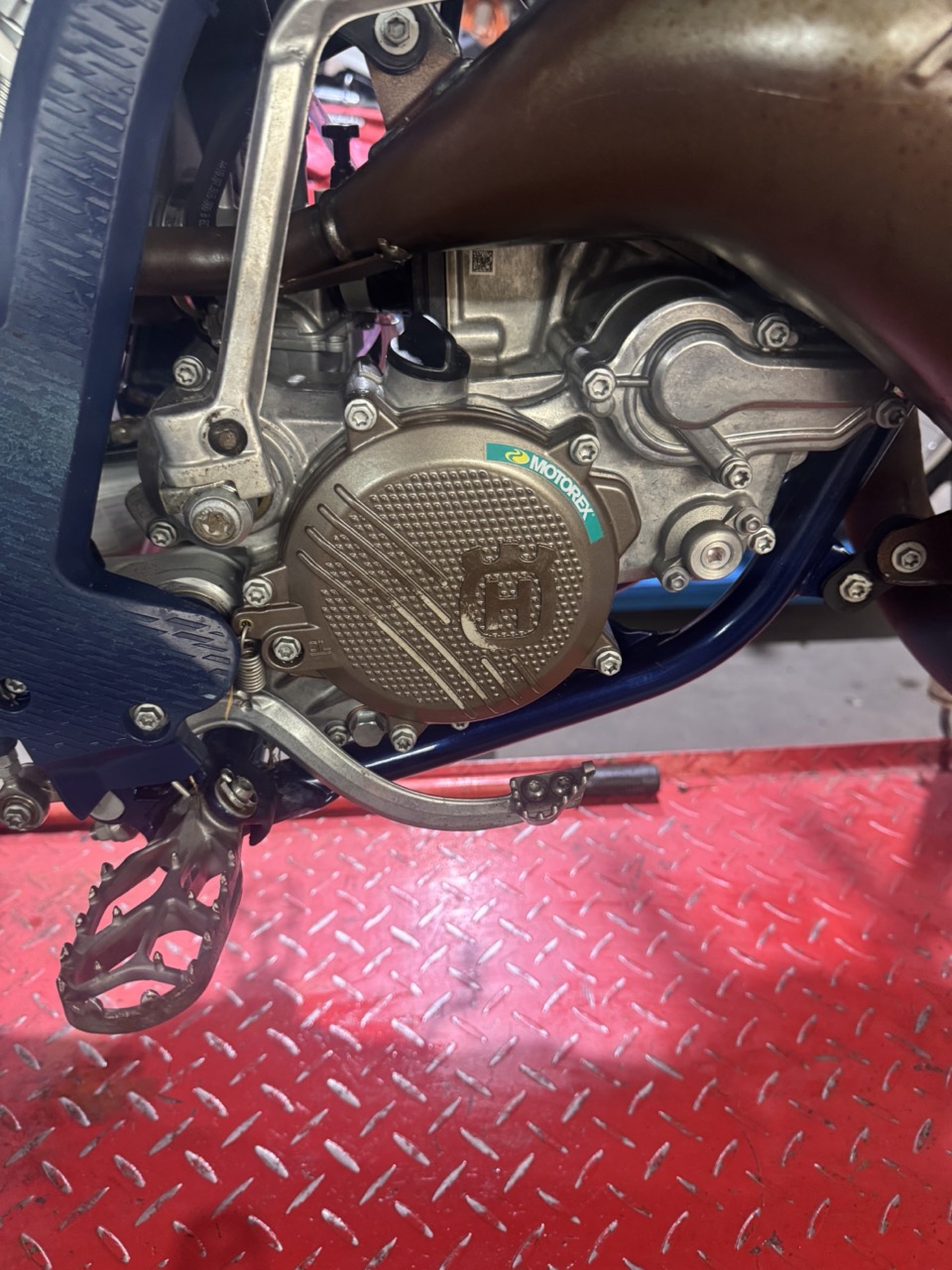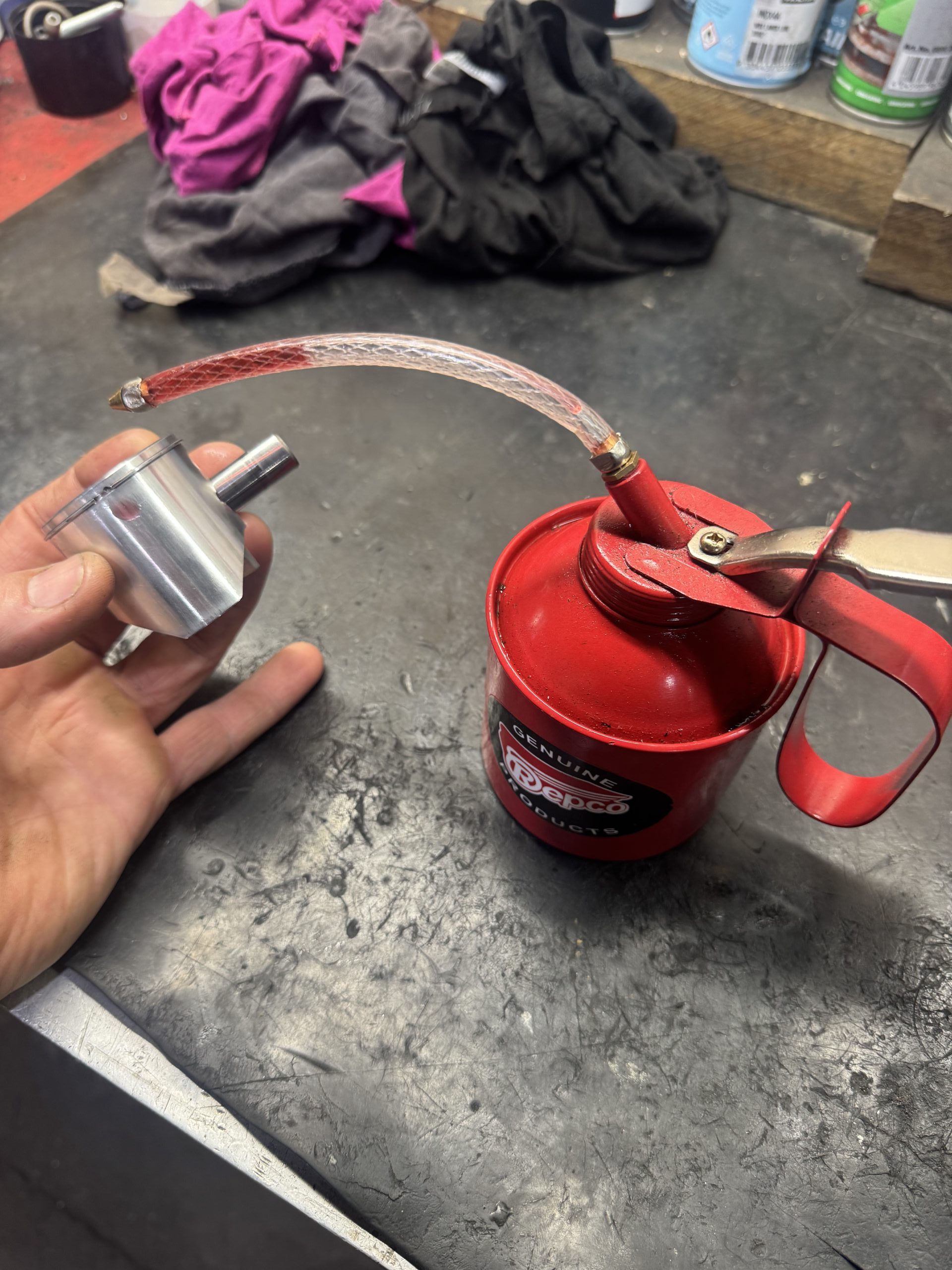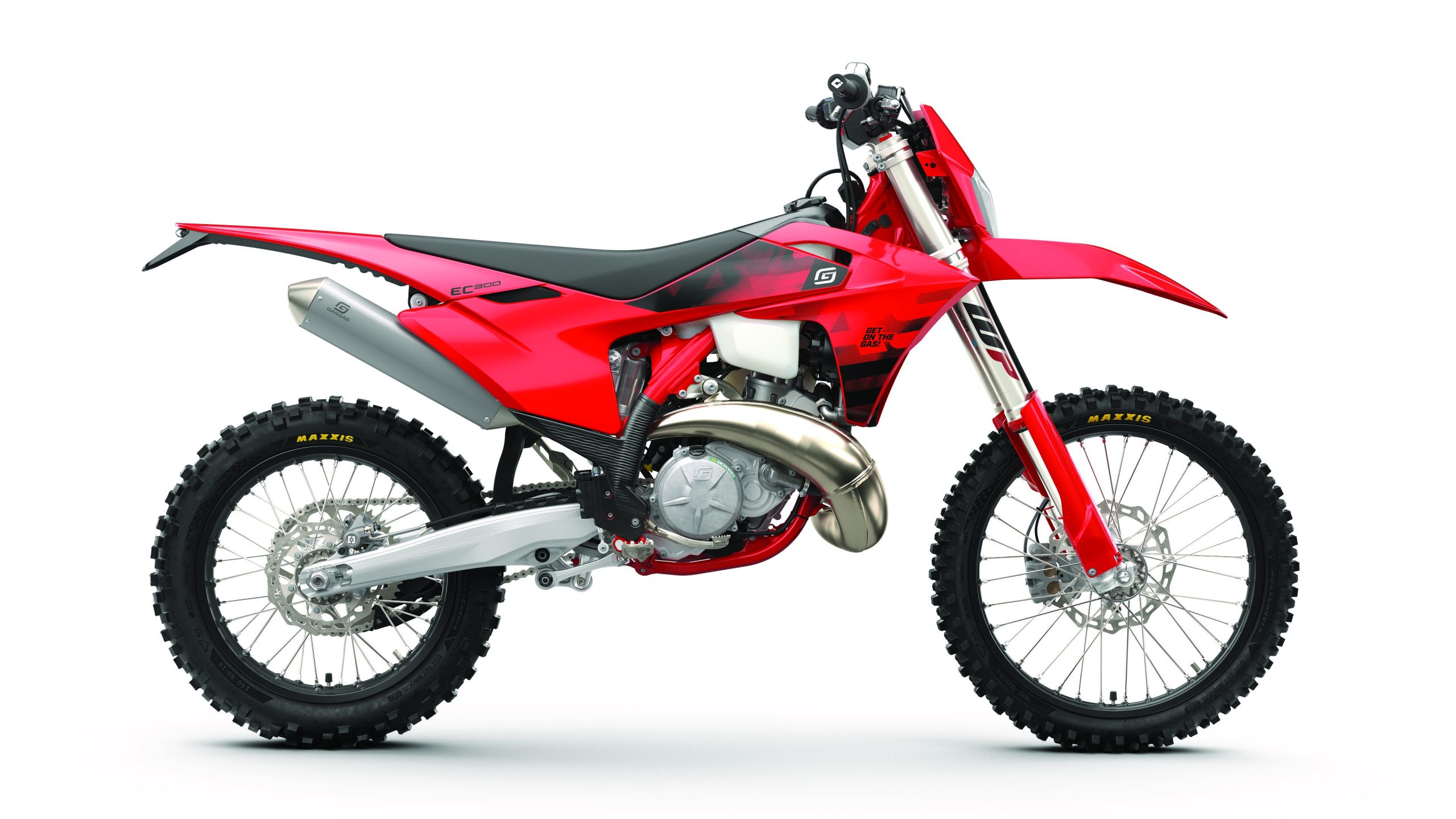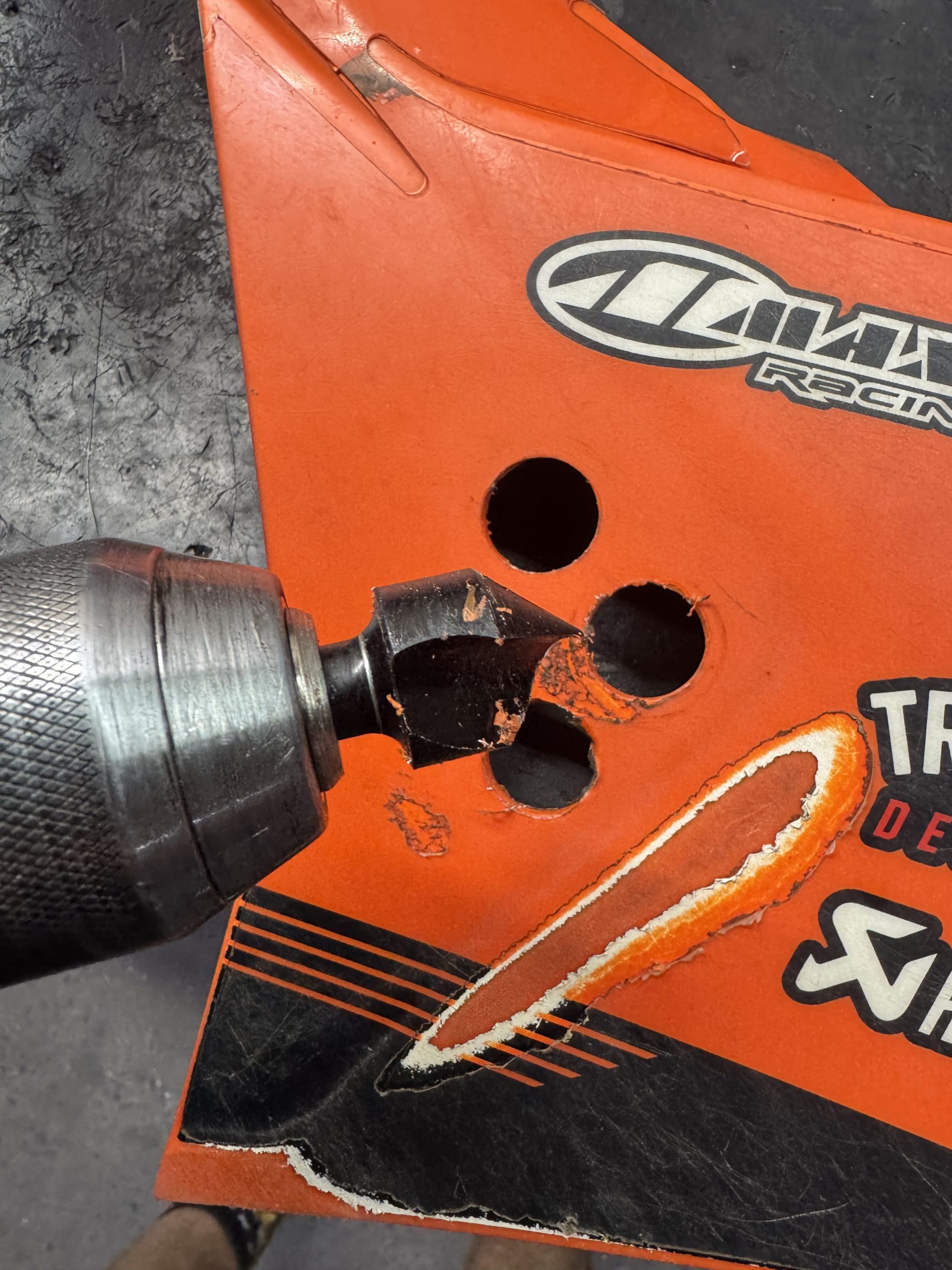The KTM two-stroke power valve clip is a wire clip that secures the power valve arm from the bottom end to the valve in the cylinder. This clip needs to be removed to remove the cylinder in order to replace a piston during a top-end rebuild. Failing to secure the clip correctly can cause damage to the engine as well as cause power loss. Everyone has either heard of a horror story or experienced one themselves when it comes to this clip. Once shown a few tips and tricks it is actually an easy job, so here is how we get it done.
#1 ACCESS THE CLIP
To access the clip you will need to remove the power valve cover. To do this you need to remove the power valve cover screws using a Torx bit. Once removed set the screws aside to be refitted later on.
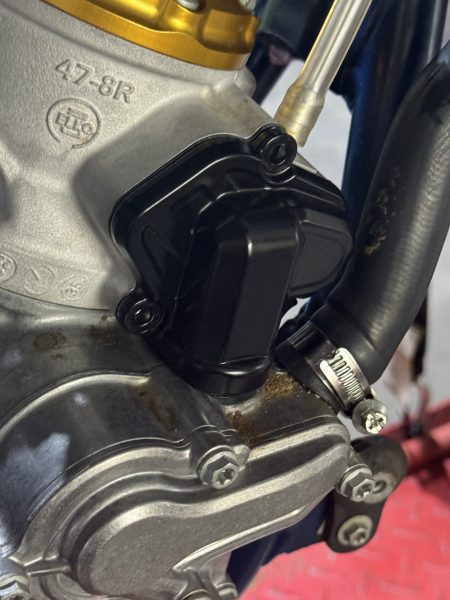
#2 REMOVE THE COVER
Once the screws are removed you can remove the power valve cover. To do this you will need to slide the cover away from the cylinder as it interlocks the rubber sealing grommet at the bottom.
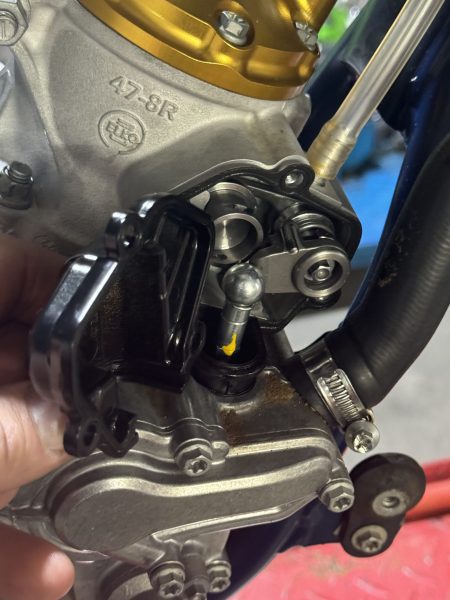
#3 DISCONNECT THE JOINT
Once the cover has been removed you will see the wire clip securing the power valve. This is a ball and socket joint that presses together and the wire clip acts as a retainer so the joint will not come apart. However, to remove the cylinder to do a top-end rebuild, you will need to disconnect this power valve joint.
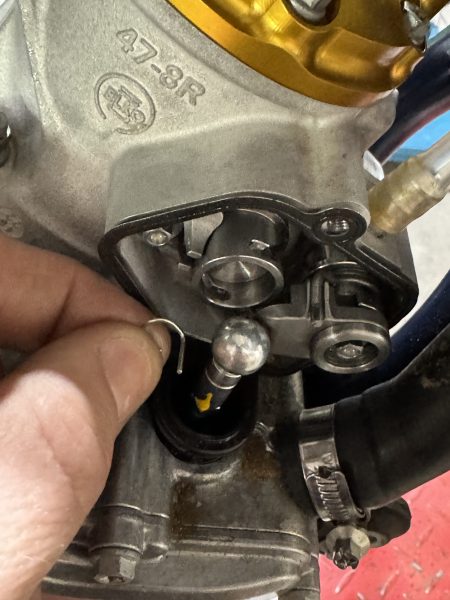
#4 PRY IT BACK
The easiest way to remove the clip is to take a large flat-blade screwdriver and pry the end of it back. While doing this keep your thumb or finger against the back of the wire clip so when it releases it doesn’t go flying across the room.
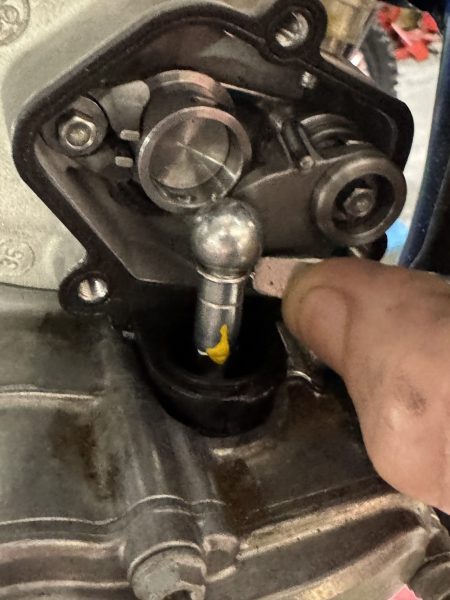
#5 DON’T LET GO
Once the wire clip has popped loose hold it tightly with your fingers or with a set of small long-nose pliers and slide the wire clip down until it comes away from the power valve.
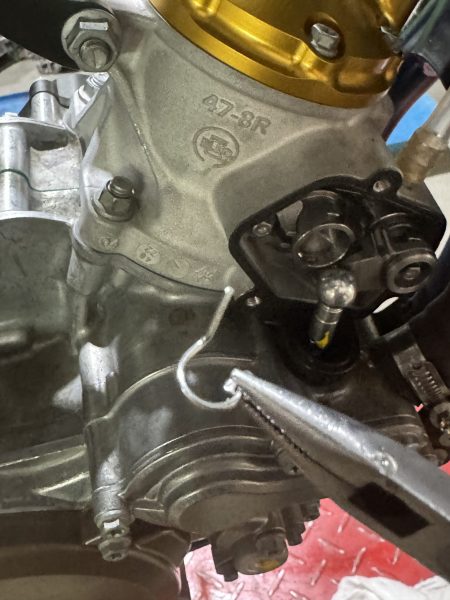
#6 POP IT LOOSE
Now that the wire retaining clip has been removed you can disconnect the power valve joint. The joint is a ball and socket so prying the ball end away from the cylinder will cause it to pop loose and then you can remove the cylinder.
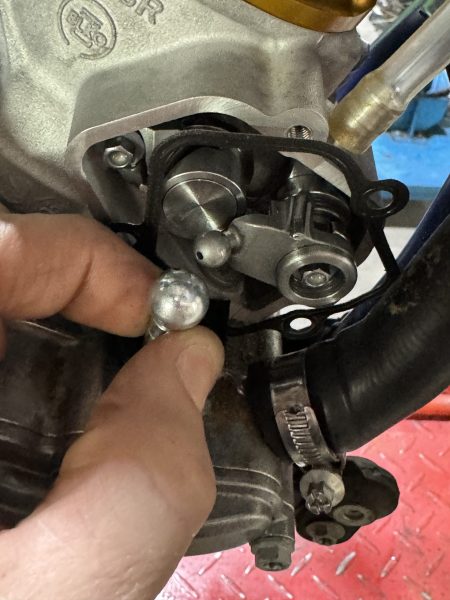
#7 CLEAN AND SEAL
When refitting the power valve joint it is important to remove the rubber sealing grommet from the engine and clean it well as it can build up with dirt and oil. Then apply a small amount of black RTV silicon to the sealing surface before refitting.
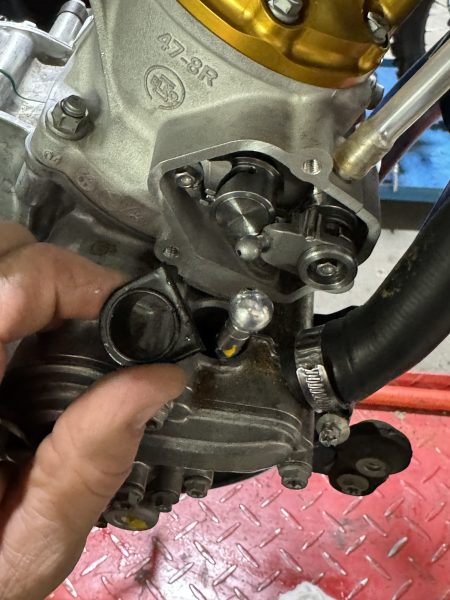
#8 PUSH IT TOGETHER
Fit the lower rubber sealing grommet and power valve gasket before pushing the power valve joint together. If you push the socket end of the power valve arm onto the ball end you will feel it pop into place. You will need to push it on all the way as far as it goes or the wire securing clip will not fit.
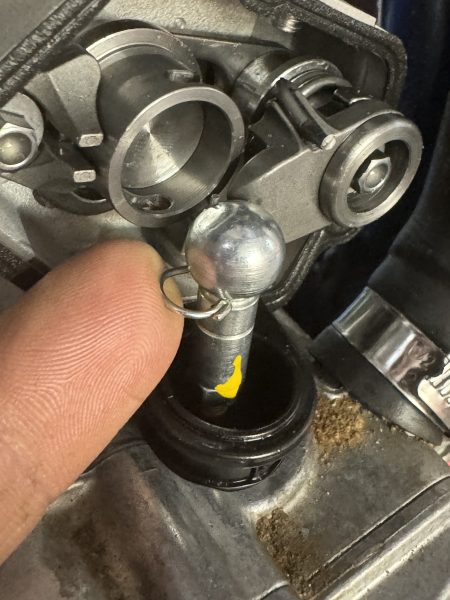
#9 FEED IT THROUGH
Take a pair of small long-nose pliers and hold the end of the clip tightly while you feed the end up through the holes in the socket end of the joint. You will need to pay careful attention to line the wire clip up through the holes or it will not click into place. Once the wire tip is in place, take your thumb or finger and push the clip forwards so the rounded end of the clip pops into place.
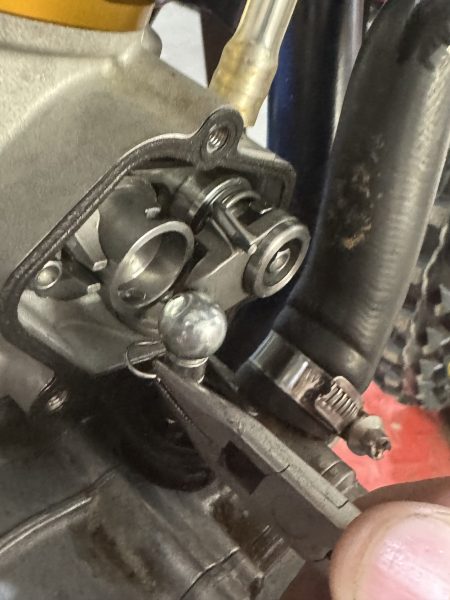
#10 SCREW IT ON
Once the retaining clip is in place, refit the power valve cover by interlocking the lower groove in the cover with the rubber sealing grommet. Then once the cover is in place, secure it with the Torx screws you removed earlier.
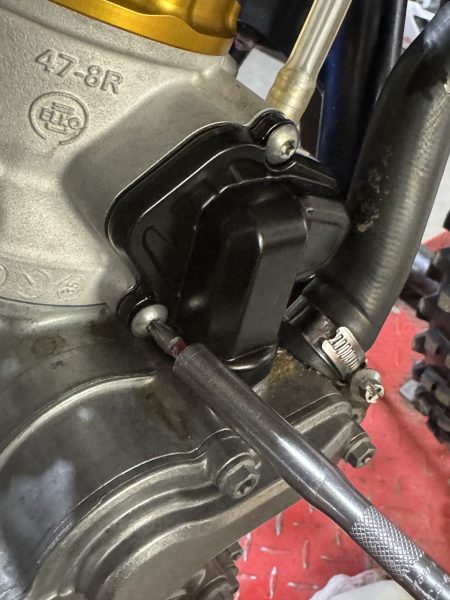
Dos
- Take care and pay attention when removing or securing the power valve clip
- Place a rag over the power valve hole in the engine cases to prevent you from dropping the clip in the engine
- Give the power valve arm a tug once secured to make sure the securing clip is doing its job correctly
Don’ts
- Pry too hard on the wire clip or you will bend it and it won’t do its job correctly
- Let any mud or dirt fall through the power valve hole in the engine case
- Reuse old gaskets
TOOLS
Torque bit, flat-blade screw driver, rag, small long-nose pliers
WARNING
If this power valve joint is not fitted correctly then it could cause severe damage to the engine or cause a significant lose in power.
WHAT IS A POWER VALVE?
The Power valve is a flap or device in the exhaust port of a two-stroke engine that lowers the exhaust port height at low RPM and then opens or lifts the port height at higher RPM. This gives the two-stroke engine more power over a broader RPM range and makes the power curve smoother and more useable.

